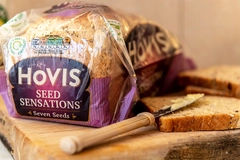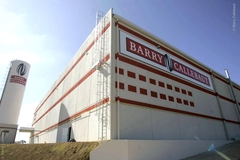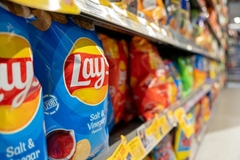PepsiCo closes multiple Frito-Lay plants across US amid snack market pressures
Key takeaways
- PepsiCo is closing Frito-Lay plants in Florida, California, and New York as part of cost-cutting restructuring.
- Third-quarter 2025 results showed 2% decline in North American food volumes as the company adjusted to weakened snack demand.
- One-third of consumers globally increased better-for-you snack consumption versus only 15% for traditional snacks, according to Innova Market Insights.
PepsiCo is shuttering several Frito-Lay manufacturing facilities across the US in response to weakening consumer demand and rising operational costs, with major closures announced throughout 2025 as the company restructures its North American snacks business.
The wave of closures spans multiple states and affects facilities that have operated for decades, marking a significant contraction in the company’s domestic manufacturing footprint as consumers pull back on snack purchases amid persistent inflation and shifting dietary preferences.
Recent closures and layoffs
The most recent closure announcement came in early November 2025, when PepsiCo confirmed it was closing two Frito-Lay facilities in Orlando, Florida. The company filed a Worker Adjustment and Retraining Notification notice indicating 454 employees at the Silver Star Road manufacturing plant would be laid off, with an additional 46 workers at a nearby warehouse facility facing termination by May 9, 2026.
“This was a difficult decision, as we know how much this site and its people mean to the Orlando community,” PepsiCo Foods US said in a statement. “This action was driven by business needs, and we are committed to treating every impacted employee with care — providing transition assistance, career support, and pay and benefits during this time.”
The Orlando facility, which has operated since 1965, marks the latest in a series of closures that began earlier this year. In June 2025, PepsiCo shuttered its Rancho Cucamonga, California, manufacturing plant after more than 50 years of operations, eliminating between 432–480 positions. The company declined to provide specific details about the closure but emphasized its commitment to supporting affected workers.
In February 2025, PepsiCo announced the closure of its Liberty, New York, facility, which produced PopCorners snacks. The plant officially closed on May 21, 2025, laying off 287 workers. The company has also made adjustments at other facilities as part of its broader cost-reduction efforts.
Shifts in demand and earnings
During PepsiCo’s October 2025 earnings call, CEO Ramon Laguarta addressed the closures directly, acknowledging a fundamental shift in consumer behavior since the pandemic.
He noted that the company is making adjustments to both assets and headcounts to ensure the right cost structure, describing the facilities being closed as manufacturing nodes no longer needed as capacity has increased elsewhere in the system.
CFO Jamie Caulfield, who announced his retirement during the third-quarter earnings call, acknowledged that the Frito-Lay division had shown subdued performance in recent quarters and noted that turnaround efforts are underway.
The company’s financial results reflect these challenges. According to PepsiCo's third-quarter 2025 earnings report, sales volumes for Frito-Lay snacks and other foods in North America fell 2% in the quarter, while worldwide volume for both food and drinks fell 1%. North American beverage volume declined 3%.
PepsiCo has not yet responded for comment.
Cost of living crisis
PepsiCo’s closures reflect broader challenges across the US food manufacturing sector as consumers reduce spending on snacks amid inflation and shifting dietary preferences.
Inflation and rising costs are causing many consumers to cut back on non-essential products.Despite overall snacking remaining popular — with 56% of global consumers snacking daily, according to Innova Market Insights — traditional snack brands face pressure from health-conscious consumers. Innova research shows that approximately one-third of consumers globally have increased their consumption of better-for-you snacks over the past year, while only 15% increased intake of traditional sweet or savory snacks.
Other major food companies have announced similar closures in 2025. General Mills reported a 5% drop in third-quarter net sales, while J.M. Smucker reported a 7% drop in sweet baked snack sales.
Innova data shows that 60% of consumers always look for healthier snack options, with 32% of European consumers believing natural ingredients are essential. PepsiCo has responded by reformulating products without artificial colors and flavors, using olive or avocado oil, and introducing smaller pack sizes for price-conscious consumers.
US logistics issues
The closures span California, Florida, and New York, affecting Frito-Lay’s Doritos, Lay’s, and PopCorners brands. In many cases, warehousing and distribution operations continue at closure sites, but manufacturing has been eliminated.
PepsiCo has attributed the closures to “business needs” while citing broader efforts to optimize its cost structure. In earnings calls, executives referenced integrating operations, reducing redundant logistics, increasing automation, and centralizing production as strategies behind the consolidations.
Market pressures in snacking
While taste remains the primary driver for snack selection (58% of global consumers cite it as the main reason, according to Innova), health considerations increasingly influence purchase decisions.
PepsiCo maintained its full-year outlook during its October earnings call, expecting core constant currency earnings per share to be roughly unchanged and organic revenue to grow by a low single-digit percentage.
The company faces pressure from activist investor Elliott Investment Management, which took a US$4 billion stake in September 2025 and pushed for changes, including potentially refranchising its North American bottling network.
The closures represent a significant recalibration of PepsiCo’s manufacturing footprint as the company adjusts to changing consumer demand. Laguarta emphasized plans to aggressively reduce costs while investing in innovation, betting that streamlined operations will position the snack giant to return to growth in 2026.



















